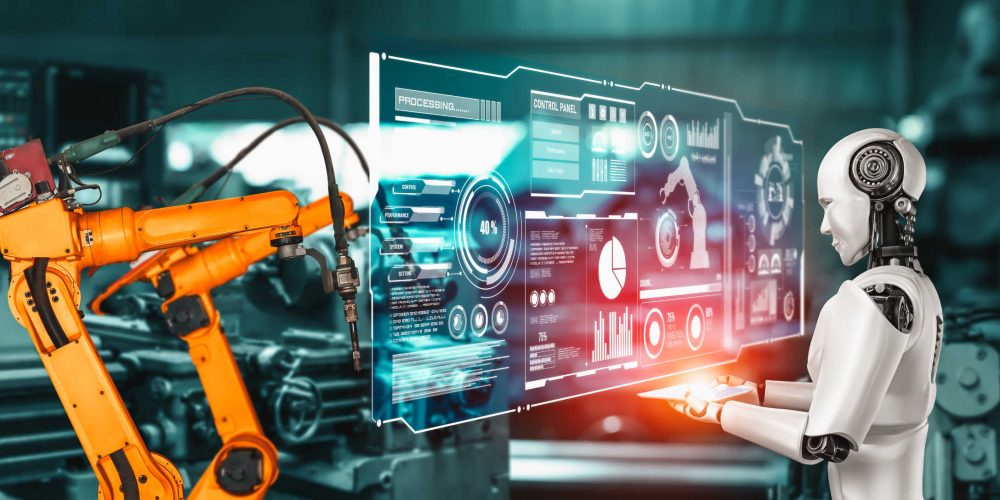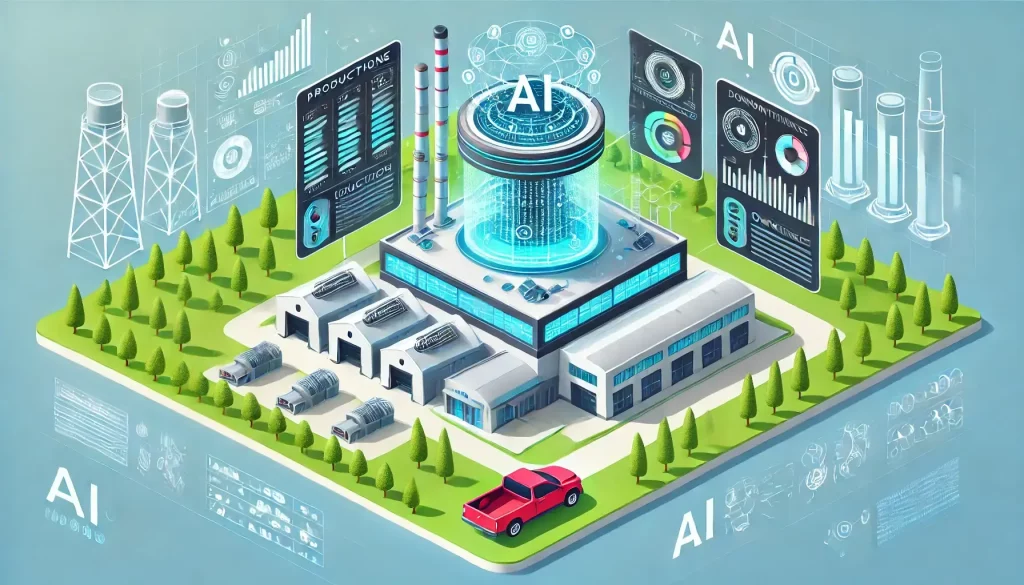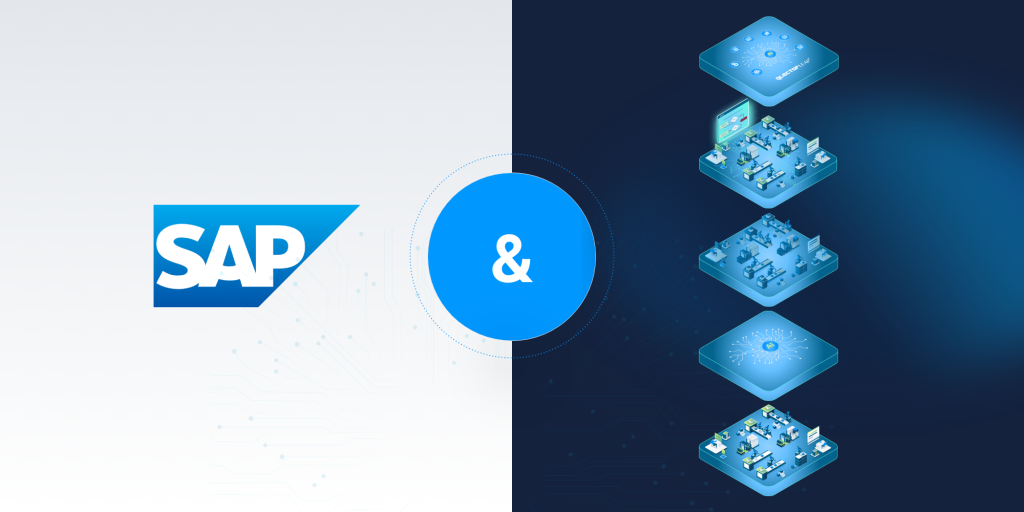If we take a closer look at production planning, we all face very similar, if not the same issues. We all want to narrow the gap between theory and shop floor reality and better understand what, when and how much customers will buy. We are also trying to ensure more efficient communication and use of data from different information silos such as ERP or MES. If we also consider the challenges of low overall equipment effectiveness, the question is whether your company is already taking advantage of all the benefits that the robotization of production planning or so-called cognitive assistants are bringing to the lives of industrial companies?
Reduce downtime by up to 25 percent
Artificial intelligence (AI) is one of the leading technologies in Industry 4.0, bringing huge savings and benefits to manufacturing companies with advanced machine learning algorithms. With so-called cognitive assistants powered by AI, discrete manufacturing companies can manage complexity much more easily and increase planning speed by up to 10 times, shorten throughput time on production lines, simultaneously plan operations across two production sites instead of one, and reduce organizational downtime by up to 25 percent!
Increase productivity by up to five percent
The experience of process industry companies before and after implementing AI into planning processes shows that they can significantly reduce the risks of relying on a single person’s experience and knowledge of scheduling, successfully automate repetitive tasks, and increase productivity by up to five percent.
But first things first … Let us take a look at what exactly happens when AI takes over production planning and what are the preconditions to reap the mentioned benefits and savings …
How much will customers buy?
As business leaders, when faced with external influences that dictate the pace of production, we can see that one of the biggest challenges that complicate and slow down the production planning is certainly the desire to better understand what, when and how much customers will buy. On the other hand, we are exposed to (too) long delivery times for incoming raw materials, or worse, their long-term or permanent shortage. In this case, AI does not work like a magic wand, of course, but it helps us identify certain patterns so we can make better decisions or set up guidelines for purchasing.
Data locked in silos
We also face internal challenges. We have found that companies are capturing more and more data that is not being used wisely because it is locked up in various information silos, such as ERP or MES systems. When these solutions, or any IT systems in the industry, do not follow the natural workflow of production, we usually try to overcome them with additional or alternative tasks, usually in the form of Excel spreadsheets, notes, emails, meetings or phone calls. Although these additional steps provide a better level of information to some extent, this information is not put into the context of the whole as such and is not captured and made visible in the system.
Collision of two worlds
All this leads to a big gap, or rather a collision of two worlds, which occurs when the planning of when and how to produce the ordered items is confronted with the shop floor reality, where perhaps an epidemic has just occurred or the machines have been stopped due to missing materials that should have been delivered. Such anomalies are usually solved by experienced individuals, such as department managers or planners in logistics departments, who still do this mainly by hand or on paper or in meetings, via phone calls or by calculations in spreadsheets.
Third stage of digital maturity
In fact, most manufacturing companies in the CEE region are still in the third stage (known as visibility) of digital maturity according to the Acatech model. Basically, this means that they are implementing certain MES solutions to better visualise and understand what is happening to them, but they are not taking full advantage of understanding why something is happening and what will happen in the future.? If we understand how GPS can help us plan a trip, we can probably imagine how a solution that calculates and suggests the ideal route and arrival time could help us plan production, warn us of unannounced traffic jams or problems along the way, and suggest the best alternatives.
Two million simulations per minute
In this analogy, AI helps us predict production throughput times learned from historical data. It also constantly calculates a huge amount of scenarios and simulations (up to 2 million per minute!) and makes suggestions on how we can reduce the negative impact of unfulfilled orders and dissatisfied customers. Taking into account a wide range of possible solutions, we are moving in a new paradigm of manufacturing companies when we understand the past and at the same time we are able to prepare for the events of the coming days, weeks and months – in all shifts, on all production lines and in all plants!
Data-driven digital twin
In practice, this means that AI solutions for efficient production planning, such as Qlector LEAP, create a data-driven digital twin of your factory. With their help, we can create digital entities of all the key elements of production (equipment, plants, lines, teams) and calculate different probability levels for the fulfilment of production orders.
Humans as gods
We could even joke a bit that in Industry 4.0 production managers and planners are becoming a kind of gods who see everything and know everything, as AI provides them with accurate insights into “what, when and who”. At all times, they see in the future what exactly and with what materials we will produce, when we will finish production order or when we will have to change tools or reset the line. It also helps us understand and select best combinations of people, machines, and products.
Material flow predictions
As we walk the fine line between efficient inventory management and avoiding delays, AI also provides us with predictions about material flow – what material we will use, whether we will have enough in stock, whether it may be in another warehouse, and whether suppliers have confirmed when and how much they will deliver. When problems arise, AI alerts us and suggests solutions based on data about decisions we have made successfully in the past.
Information framework
Historical data provides an information framework for AI solutions to plan and manage production. This includes data on bills of materials (BOM), production orders, and technological procedures, as well as definitions of waste, equipment, workstations, and problems identified in the past. All of this is input data for learning and building a digital twin that is constantly updated with new data from current activities on the shop floor and the ERP, MES, PLC and IoT systems.
Insights and alerts for responsible persons
At the same time, AI provides various insights and alerts to those in charge in real time It also takes into account the impact of cross-plant production and cascading effects – for example, when a downtime on line 1 affects line 2, or when problems on a particular line in plant 1 are reflected in plant 2.
Optimal production schedules
In summary, the use of AI primarily provides for the automatic creation of optimal production schedules, including deadlines for material supply, exchange of dies, etc. The inventory of stocks or raw materials is automatically checked and constantly compared with ERP records and the actual situation in production. It provides effective support in resolving downtime with quick “what-if” simulations and calculations of different scenarios. It also helps us to schedule employees and model their efficiency.
What can AI do for you?
If you want to find out if it makes sense to incorporate AI into your production planning, do not hesitate to contact us (team@http://gcloud.qlector.com/wp-content/uploads/2023/03/production-planning-ai-2.jpg.com) and schedule a free consultation and demo presentation. In the meantime, we have created an infographic to give you a better overview of all the “before” and “after” effects and benefits in discrete and process industry companies.

Are you interested in what kind of value an operational use of AI can bring to your company? Book your FREE 15-Minute consultation!











